CES 2007 + iPhone
Jan 13, 2007, 3:26 AM by Eric Lin, Eric Zeman, & Rich Brome
Phone Scoop reports from CES 2007 in Las Vegas, plus the Apple iPhone. New phones from Samsung, Sony Ericsson, Motorola, Nokia, LG and UTStarcom. Plus videos of NFC, Mobile TV and Video Sharing in action.
Part 1
Verizon Wireless
Only days before the holiday break, Qualcomm let it slip that MediaFLO would launch early this year, raising expectations that Qualcomm and Verizon would announce commercial service here at CES, since Verizon is Qualcomm's only confirmed partner as of yet. Today the two companies showed off MediaFLO, which Verizon will launch as VCAST TV this quarter.
Unlike Verizon's current video offering, VCAST TV does not stream video over the cellular network. Instead you tune into a channel that is being broadcast over a completely separate network, similar to how you get local TV stations over the air. MediaFLO isn't all that different than over-the-air digital TV that stations across the US are rolling out. The first difference is that it's broadcast in QVGA, which is the size of the VCAST TV phones' screens.
The broadcast quality is impressive. The video is sharp and perfectly smooth. The sound is excellent (it's encoded in AAC+). And changing channels is nearly instantaneous. It really does mimic the experience of home digital TV.
The second difference is the programming. Verizon plans to launch its service with 8 channels including CBS, NBC, ABC, Fox, MTV and Comedy Central, as well as a few other stations. (Although Verizon only has concrete deals with CBS and Fox so far; negotiations with other companies are still in progress.) During prime time most of these stations will show the same thing as their home TV counterparts, including the same commercials. However at other times - like the middle of the day - they will be showing other programming and re-running prime time favorites, instead of the usual talk or game shows.
Although the broadcast won't be using the same exact live feed as your living room TV at all hours, Verizon talked up the fact that it could be used for live breaking news and live-action events, including sports. Verizon also hopes to offer some sort of local programming by the end of the year, though they haven't figured out what just yet. At first only generic east- and west-coast network feeds will be available.
Because VCAST TV is a live TV network and not on-demand, you have to watch it like in the pre-TiVo, pre-set top box days and catch your show when it is on (though it might be repeated). To help you along, you can subscribe to a show on Verizon's web site and they will text you whenever one of your shows is starting.
There are still many unanswered questions about VCAST TV. While Verizon said it would launch this quarter, we don't know exactly when. Qualcomm said the network will be available in 20-30 cities this quarter, but today Verizon said it will be available in most major cities. Verizon is also still working out the cost of the service as well as the cost of the handsets. The service will launch on two phones, the LG VX9400 and the Samsung U620. Both have full VCAST features in addition to TV.
(A Verizon executive referred to the U620 as the "Mobi" during a presentation, but we were later told there was a good chance Mobi would not be the final name.)
The U620 looks like a typical Samsung slider, although it looks and feels more like the rounded models from last year as opposed to the more recent slim, angular models. Because it is a simple slider, you have to turn the phone on its side to watch TV full screen. When held this way the antenna extends straight up, but if held as you would normally hold the phone, the antenna comes out of the side.
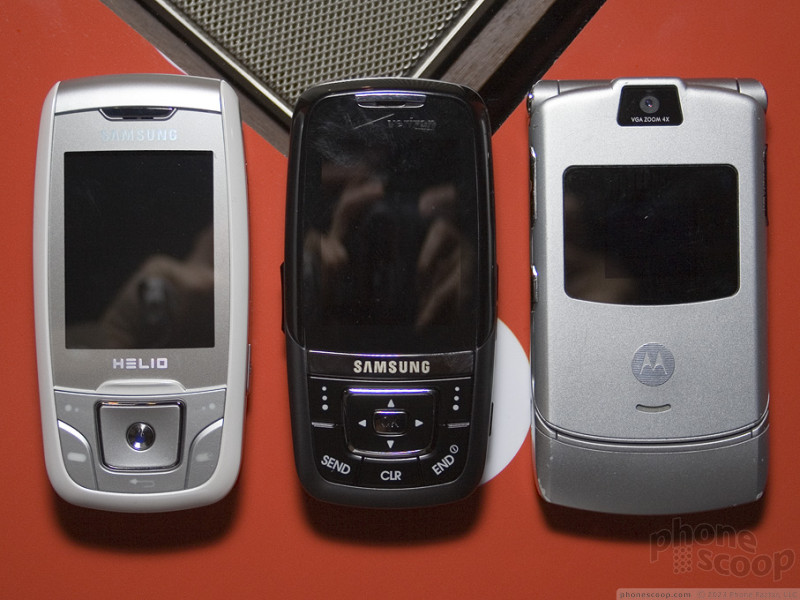
Both phones have extending antennas for MediaFLO reception. We tried watching TV with the antennas down and had no problem, so we asked around and learned that the antenna helps most when changing channels or when reception is very weak. The LG's antenna is easily twice as long as the Samsung's.
The LG VX-9400 looks like a wide, slim candybar style phone, only with no visible numeric keypad. The screen rotates 90 degrees to reveal the keypad and of course to set the screen up for watching TV. At least on this model only the numeric keys are under the screen. On previous prototypes soft keys or send/end keys were under the screen as well. Now all navigation keys - including the TV key - are in a nice cluster at the bottom of phone, where they are always accessible.
Because you need to use the screen in landscape mode for a number of things other than watching TV, (like dialing a call, for instance,) LG has integrated a number of nice interface touches around the rotation of the screen. For instance the camera viewfinder is normally letterboxed when the screen is in portrait mode, but if you flip the screen up, the viewfinder automatically goes full screen.
You can watch a video of the LG VX9400 and VCAST TV here:
or you can visit YouTube or Google Video for more viewing and sharing options.
Nokia
Tonight we had our first opportunity to get our hands on the newest phones from the major handset manufacturers. In the bunch were two new phones from Nokia and one slightly updated version of an existing model. The first thing noticeable about every single phone is that they all did a superb job of attracting fingerprint smudges. Icky body oils aside, the phones were relatively sharp looking.
The first new Nokia is the N93i, which is essentially an N93 after several weeks of Weight Watchers. It boasts a slimmer profile than its older brethren, as you can see in the pictures, but it's still pretty hefty. Where the N93 is a total brick, the N93i is a hair smaller in every dimension, which you notice only when the two are side by side. It felt solid and the surfaces were smooth and easy to grab onto. No edges or ridges dig into your hand and it was comfortable to grip when closed.
Looking at it, it's obvious Nokia put in a little work to refresh the look of the phone. The color has changed from mostly black to a standard-looking metal gray. The front surface is now a glossy, smooth plastic piece and the OLED has moved closer to the bottom of the phone, which was easily readable in the dim room, but we didn't get to see the phone in sunlight. This is the one surface that held the most grime. Still, it has more style than the older version.
The basic framework hasn't changed. The top of the phone swivels the same way as the N93 and the hinge felt solid. Even after playing around with the hinge and tweaking it ever so slightly, there was very little play in it. Who knows how the hinge will stand up to daily rigorous use, though. The screen automatically re-orients itself to landscape or picture frame mode depending on which way you have it, which is always useful.
The keypad was somewhat different in texture and design than the N93. The keys all felt solid, and weren't spaced too far apart, which meant typing out text messages and navigating through the S60-based menus was easily done. All the other major camera controls remained unchanged, with the shutter release button and zoom jog dial all having satisfying action.
Testing the N93i's main feature, the video camera, produced satisfying results. The screen's colors were crisp and clear, and relatively artifact free. The controls were easy to operate and there was very little software lag on performing any of the functions.
All in all, positive changes for the form factor.
N76: Okay, so this phone is another RAZR wanna-be. When you look at it, it's obvious where Nokia got their major design cues. that's not to say that the N76 is a bad-looking phone, but it Nokia should know better than to be a style follower.
The best way to explain this phone is to say that it is the same guts and performance of the N75, but with a new skin wrapped around it. When closed, the N76 appears to be a somewhat blocky flip phone. It's hard to say that anything really sets it apart from the large field of flip phones, except that it's bigger and squarer. While the N75 was by no means a large phone, the N76 does present a slimmer profile, which you can see in the pictures. But it is also a bit longer than the N75.
It feels smooth and solid in your hand, and has a decent display on the outside. There are also the now-standard controls for the music player on the front, so you can access and play your tunes without opening up the phone. These buttons were all easy to use and performed their functions well. Like the N75 these controls can also be used to navigate other functions like the camera, calendar and call list.
Opening the phone is very satisfying. As with other Nokia models, it simply feels solid. The build quality of the hardware is certainly not an issue. As you can see in the pictures, it clones the style of the RAZR in a way that only Nokia could do.
The first thing you notice upon opening it is the screen. The screen is flat out amazing. The colors are brilliant and vivid, and the motion smooth and crisp. The same was true of the N75 and most S60 phones, but here the screen is really all you see. Navigating between menus and folders and applications was intuitive with the S60 3rd edition operating system and the animations were deftly displayed on the screen. Of the phones many features, the screen definitely ranks high, though it would have been nice to see an improvement over the N75's screen.
The keypad is a different story. Where other RAZR-esque phones have mimicked the laser-engraved feel of its keypad, Nokia goes in a slightly different direction. There was some disagreement among us about how satisfying the keypad was to use. The keys are somewhat textured with vertical ribs running across each key. The action to most keys was acceptable and there was no delay between activating a key and seeing the phone react. Even so, it did come across as just a little cheap feeling, compared to the super-smooth surfaces available on other phones. Typing out text messages and emails was easily accomplished. The center control key had little to no response, though, and it was hard to tell if it had been pressed or not, which resulted in double pushes. Also, the backlight was overly harsh and bled through the keys, making them hard to read. When compared side by side with the N75, the keypad does look better, but sometimes form gets in the way of function.
As with the N75, the N76 allows you to take a picture without opening up the phone. Using the dedicated camera key lets you compose an image with the front display acting as the viewfinder. The pictures from the 2-megapixel camera looked good on the screen, with images appearing to be sharp. At times the camera took several seconds to focus before snapping the picture, and other times it shot the picture right away. Given the dim lighting in the room, though, this wasn't surprising.
The N76 qualifies as a solid music player phone and Nokia gets kudos for including a standard 3.5mm stereo jack. Listening to some tunes, the media player worked well and the sound was reproduced accurately through headphones. Listening via the speaker did not provide for an enjoyable experience, though that can be said of essentially all phones.
For a first impression, the N76 is certainly a useable phone. The UI is quick, easy and just makes sense. It may not be the style leader that Nokia aimed for, but it's a solid performing device that looks better than its predecessor and allows you to access and use all the standard features with ease.
6131nfc: The only difference between the 6131nfc and the 6131 is the inclusion of near-field communications. Essentially, this allows the phone to act as a digital wallet, storing credit card information and letting users make automatic payments by waving the phone over a scanner.
Nokia did not have a full-fledged demo of this feature available to see on Sunday. The one demo on hand was using the phone to read a digital business card. One of the Nokia staffers had a business card stored in his wrist watch (how it got there is a mystery) and when the 6131nfc was swiped over the watch, the business card info of the wearer of said watch appeared on the screen of the phone. The menu let you add the contact information directly to the list of contacts. This is just one of many potential uses for NFC.
Part 2
Samsung
One company that's been very busy working on new products is Samsung, which introduced 6 new phones yesterday at CES. Including both clamshells and candy bars for CDMA and GSM networks alike, it's apparent that Samsung has serious image issues, as nearly all the phones are super slim. Cramming useful functions into drastically reduced form factors, however, did present some challenges for the Korean giant.
Before we dive into the phones, one surprising bit of information is that the i760, a bulky slider phone with full qwerty keyboard that slides a la HTC Wizard style, will ship with Windows Mobile Smartphone Edition 6, according a to Samsung rep who may have slipped up in telling us.
Samsung wasn't showing powered-on i760s, so we can't say much about how it works in practice.
It does seem like a good size and most of the keys seemed workable, although the send/end keys are very slim and awkwardly mounted on the side edges, making them uncomfortable to press to purpose, yet quite easy to press by accident. Both sets of soft keys are un-intuitively placed nowhere near the parts of the screen they are supposed to match up with. The design in general seems unrefined, like an early prototype or concept design.
These issues are mostly things that would be easy to adjust to, however, or things that are aesthetic and subjective. That's probably okay, since the i760 is expected to compete with the HTC Libra, another device that probably won't win any style awards. Only when we get our hands on working units could we say whether the i760 will be a good workhorse for the business users it's intended for.
Moving on, let's start with the handset that generated the most hype and buzz, the Ultra Music Phone. At first glance, it looks radically cool. Trim phone interface on one side, Zune-like MP3 player LCD and controls on the other. Oh, and of course it's darned near bulimic in thinness. One you pick it up and play with it for a while, though, the drawbacks of this design become quickly apparent.
First things first: the phone side. Rather than having a standard 1.5-inch-square or bigger display on the phone side of the device, it has a full color 2-line screen positioned at the very top of the phone, measuring perhaps 1.25 inches by .75 inches. You may not think that would be a real issue given the much larger LCD on the back, but believe us when we say it is. Now that we're all used to using larger displays on phones, a 2-line display just isn't easy to work with.
Even though Samsung put some thought into the control panels accessible from the keypad, navigating between functions was not quickly accomplished. The icons were oriented in a horizontal fashion and you scroll through them sideways. Because the screen is so small, there were only a couple of icons visible on the screen at any one time, leaving you to wonder how far you have to scroll to get to the function you want.
So, let's say you wanted to type a text message. Once the texting function is chosen, you only have two lines of visible text to input. It was very limiting to have such a narrow view of the message we were typing, especially when pecking out a full 160-character message. It was very frustrating not to be able to see the entire message at once as you can on most other phones. Now imagine these limitations spread out across all the different menus and functions of the phone and you probably get the point.
Dedicated music and camera buttons made accessing some of the features easier, but not overly so. As for the buttons themselves, there was very little interaction with them. It was difficult to tell if you had pressed them or not.
Okay, so you're done with your phone calls and you want to listen to MP3s. You have to press and hold the music button on the side of the phone to activate the other side of the phone. As it was demonstrated and explained to us in the limited time we had with the phone, only once side of the phone can be active at once.
After the media player side is activated, the menu selection process was onerously slow. The navigation pad is touch sensitive, so you're not really pressing it as much as you are passing your finger over it. As with the front, the menu icons are presented horizontally at the very bottom of the screen even though there's a huge display to utilize. Why the rest of the screen is blank is a mystery to us. Unlike the front, where scrolling sideways was relatively quick, scrolling on the media player side took forever. There was an animated action to bring up each selection, and it just takes way too long.
We didn't see any headphone jacks, but did spot what looked like a proprietary interface jack of some sort to attach headsets too. Why Samsung can't use standard jacks is beyond us at this point. The Ultra Music does support stereo Bluetooth, but the demo unit had headphones plugged directly into the proprietary jack. The Norah Jones they had pumping through the device sounded rich and warm, and the MP3 player features did let you manage play lists and more.
Composing pictures with the camera was pretty cool. Since the LCD on the media player side of the phone is so large, you really feel like you're using a full-fledged digital camera to take pictures. It tracked well when we panned the camera around and pressing the shutter button presented you with almost instantaneous results.
While we give Samsung credit for creating a very buzz-worthy device, in the end it was a disappointment to use and interact with. Whether or not some of the issues we encountered were pre-release bugs is hard to say, but let's hope that some of the not-so-easy-to-use functions have been streamlined come time that the phone is offered to the public.
Moving on, next we looked at the a727. Think of it as a faster, darker version of the Trace. Where the Trace is silver and EDGE-capable, the a727 is black and HSDPA-ready.
It sticks with the Trace's 1.3 megapixel camera, which was a bit of a disappointment. Like its older cousin, the a727 is impossibly thin. When you hold it, it barely feels like it has any weight at all. It might feel the same in your hand as an average deck of cards. To us, the thinness borders on scary. Sticking it in your back pocket could prove dangerous. Even though the casing felt solid and strong, the fear of snapping it in half is not unfounded. It also has the same texturized paint that Samsung has been putting on its latest models.
Compared to the T-Mobile software on the Trace, the Cingular interface on the a727 was pretty good. Sticking to a Halloween-esque theme with black and orange colors, the animated icons enlarged each time you scrolled over them and minimized when you moved on to the next icon. There was little to no lag when switching between icons and the screen allowed for enough icons to be seen at a time to allow you to find and select what you wanted quickly.
Dedicated feature buttons on the keypad for the camera and music player made for speedy access to those functions, though the interface with the applications themselves were at times cumbersome. The music player was similar to the one on the Ultra Music, but pared down for the smaller screen and simplified somewhat.
The keypad was not really satisfying. With the trend of creating completely flat keypads well entrenched, the action on the keys was minimal, given the super slimness of the phone. Though there was a bit of a click when each button was pressed, it didn't provide as much feedback as we would like. Holding the phone to type out text messages was interesting. It was like typing on a business card. With the phone being so thin, the distance between your forefingers and thumbs is fractional and typing messages just felt a little flimsy. There's no other way to say it.
Even though Samsung made some improvements over the Trace, it definitely could have done more to set this phone apart from the crowd. The HSDPA is a big step up, but limiting it with a 1.3 megapixel camera just doesn't make sense to us. Still, for image-conscious consumers, the a727 is definitely a sleek phone that ranks high in the cool factor.
Next up was the a717, another phone for Cingular. This phone is (yet another!) slim clamshell.
The overall design is similar to the m610, which is on the Sprint network. The phone feels solid in your hand, though the exterior front panel is very plain, and the exterior display is minimal. The back and front were both smooth and it easily slips into your pocket (even with the security tether attached to the display stand.)
Since it is for Cingular, Samsung loaded it with an HSDPA radio and the revised UI, which matched the a727s in appearance and function exactly. It appears that Cingular is standardizing its UI (on Samsung phones, anyway), like Verizon Wireless has done with its standard feature phones. Response times with the UI were similar to the a727, as were the animations and menus.
The keypad is very flat. There's almost no contour or texture to it at all. Even though it appears as if there are two ridges separating some of the keys, it's hard to feel it when you swipe your thumb over the keypad. Of all the keypads at CES, this one provided the least feedback when the buttons are pressed. It was very easy to make mistakes typing phone numbers and text messages as sometimes the buttons didn't register your depressions. Many phones allow you to quickly and accurately type out messages when you are looking away from the phone because of the solid tactile response. Not so here. In the blindfolded typing test, the a717 was a disaster.
Along with the a727, Samsung added more dedicated function keys to the a717's keypad that take you to the camera and music player. Of all the Samsung models, this a717 presented the best screen viewing experience with the camera. The large screen helped here. The image was super sharp and tracked excellently as you moved the camera phone around. Switching between light and dark areas didn't stress the software at all, and it took pictures instantly when the shutter button was pushed. The rotating camera lens is unchanged from the m610, and swiveling it around gives the vain user plenty of options for taking self portraits.
As with it's other phones, the a717 offers Bluetooth stereo and the ability to put it in airplane mode. This was a trend we saw across other phone brands. As more and more people are using their phones as their primary mobile media players, you now have the option to turn just the radio part of the phone off, leaving the UI and media player sill accessible for listening to music and taking pictures. This is definitely a helpful feature for people who only want to carrier a single device and happen to travel on planes a lot. When compared to its Ultra edition cousins the a717s music player produce sound of about the same quality.
Even considering its shortcomings, the a717 serves as a solid mid-tier phone.
Moving on from Cingular phones, T-Mobile gets a new Samsung as well. The T329 is an entry level clamshell that has a trimmed down feature set.
Holding it in your hand, it's light and smooth. The off-white coloring sets it apart from the silver and black colors that seem to dominate cellphone shadings these days. On the front is a vertically-oriented 1-line, 1-color display to indicate time, signal strength and caller. The display was very hard to read on the show floor.
Opening it up shows off the smallish screen and keypad, which are modestly sculpted and curved. The screen is rudimentary as would be expected on a phone at this level. The display shows clear pixelization, as do all the menus and animations. Bringing up the menus was quick and efficient, with only a handful of options to choose from. Each icon happily danced its dance when you scrolled over them. No complaints from the UI in terms of speed, but it was was somewhat frustrating if you made a mistake and choose the wrong icon. Hitting the back key sent you all the way back to a top-level menu rather than the previous screen.
Probably the best feature on the phone was the camera. Even though it's only a VGA camera, the UI for it was very intuitive. Zooming in and out and adjusting the exposure/brightness were all managed with the 5-way control pad. The quality of the pictures may not have been the best, but the experience of taking the pictures was as good as much pricier models. The zoom reacted quickly, as did the brightness control. Other functions were not as easily accessed form the main image viewing page. You had to go into other menus prior to taking the picture to access the more advanced features.
There was a media folder on the phone, but no ability to play music. It is strictly for downloaded apps from the T-Mobile services.
The browser functioned surprisingly well. Rather than some goofy homepage, an address bar popped up when you hit the browser key. Given its tri-band GSM/GPRS radio, though, this phone was not meant for serious web use.
One last Samsung phone that we were able to get our hands on was the u740 for the Verizon network. The demo unit did not have a battery installed, so we weren't able to interact with the UI, but the usability of the keypad alone is worth commenting on.
First, the u740 is a flip phone, with a dual-hinged screen that fold up like normal, or to the side to reveal a qwerty keyboard like the Motorola MPx. Perhaps it was because a million people handled it before we did, but the hinge quality was terrible. It was very loose, with a lot of play in every direction. It really should have been built much tighter. The UI will most likely be Verizon's standard interface. The u740 has a pretty weighty bulky feel to it and it's a medium-sized flip phone; definitely thick around the waist. While we were disappointed not to be able to use any of the actual features, we gave the keypad a test spin and came away sorely disappointed.
To start, the keys were very, very narrow. We're talking 3mm here, folks. This writer had a very difficult time typing on the thumb board. The layout of the keypad is just awkward. The hinge at the top of the phone almost prevents you from reaching the keys along the left edge of the keyboard and there's a small ridge on the bottom of the phone that makes typing the "p" key almost impossible. There were dedicated media keys, and the 5-way key had a fairly good feel to it. Overall, though, we agreed that this keyboard needs work.
That's about all we were able to ascertain without a working demo unit.
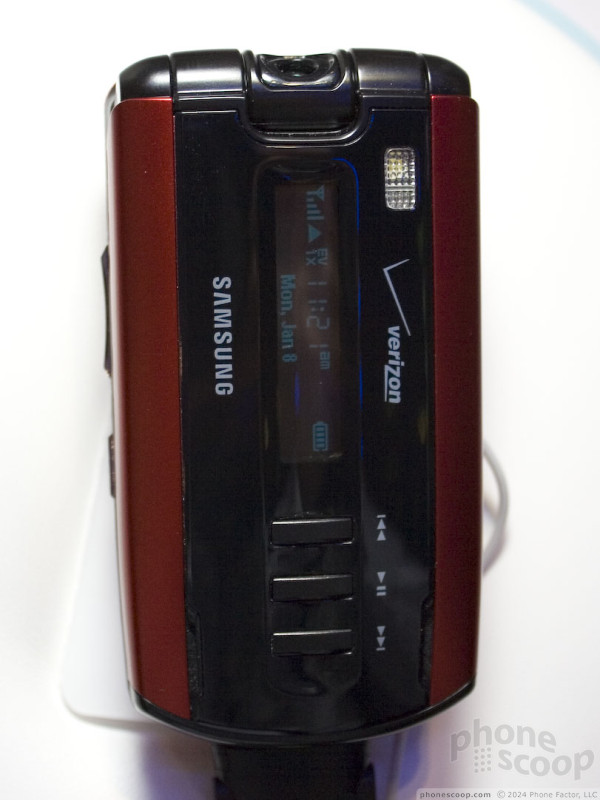
One final nugget of Samsung news. As you an see in the pictures, we spotted an a930 with red bars on the front panel. If you remember when the a930 was first seen, it had silver bars straddling the front display. When the phone was actually launched, however, it was all black. This appears to be an updated color scheme for the phone, cause, hey, red and black are just cool.
Sony Ericsson
Sony Ericsson had two new phones to show off at CES this year. Both are basic tri-band GSM phones (with the 850 band). Although both models are entry-level, each one has a couple of features that one might not expect on a basic phone.
The W200 Sony Ericsson's newest and most affordable addition to its Walkman lineup. The highlight is the music player - which can play in the background - and an M2 (Memory Stick Micro) memory card slot for storing up to 1 GB of music. EDGE and an FM radio round out the notable features.
The W200 is about the same size as the W810, but tapered on the sides so it feels smaller. The W200 is also extremely light. Just like the W810, both black and white colors are planned.
The phone feels good to hold and seems well-built. The joystick and two soft keys would be more comfortable to use if they were raised a little more, although we didn't have trouble manipulating them.
The W200 has an STN display and a VGA camera. The camera function unfortunately lacks any kind of quick-access key; you need to dig through menus to snap a photo.
The Z310a is the other new model here at CES. It's just like the Z310i for Europe and Asia, but with GSM 850 for U.S. networks. It's a fairly standard basic clamshell phone.
The emphasis with the Z310 is on style. Like the W200, it should come in more than one color. A mirrored finish on the front cover hides the external display, although sometimes a little too well. Pressing a side key will light up the external display to check the time. It appears very dim and somewhat hard to read. We could read it in normal indoor light, but those with imperfect vision might not fare so well.
Fortunately the dim outer display is augmented with some very bright lights dedicated to important status icons like voicemail, missed call, and charging.
Opening up the Z310, there is a standard-size STN display just like the W200's, and an attractive keypad. The navigation keys are great, but the number pad and side keys could be better.
Overall, the Z310 looks and feels great. The build quality is excellent for an entry-level clamshell.
The Z310 has a few features you wouldn't expect on an entry-level phone. EDGE, Bluetooth and speakerphone are nice, but it's the full HTML browser and RSS reader that are the most pleasant surprises.
We were glad to see that the Z310 abandons the unfortunate user interface on its predecessor, the Z300, instead offering a standard user-friendly Sony Ericsson interface with two soft keys. The W200 has the same interface and display.
The Z310 also has customizable color-changing animated lights around the keypad like the Z520 and Z525.
The W200 should be out later this quarter (by the end of March at the latest,) with the Z310a following one or two months after that.
Sony Ericsson's main carrier partner in the U.S. these days is Cingular, so that would be a good guess as to who will offer both phones.
Sony Ericsson is working hard on getting some phones back into T-Mobile's lineup by the end of the year. The current hangup is T-Mobile's custom software requirements like MyFaves.
Motorola
Although Motorola didn't have many phones to announce, the phone they did announce represents the start of a new generation of phones for Motorola.
The RIZR Z6 doesn't look all that different from the Z3, except that it's shinier. Shiny surfaces that attract smudges are all the rage this year. When you press a button or slide the phone open, then you also might notice the new QVGA screen on the Z6. The Z3 already had a large screen but it was only 220 x 176. Motorola seems to be standardizing on QVGA screen for all their Linux-Java phones.
Which brings us to what's really big news about the RIZR Z6, it's the first phone running this new operating system destined for the US. Not much has changed since we previewed the Linux-Java OS back in October, but we didn't expect it to. Motorola introduced a number of refinements with the new interface and they are continuing to improve it. The version loaded on the Z6 we tested was still a work in progress.
In fact the hardware is still a work in progress. Motorola is repeating the same development process as they did on Z3. Just as on the Z3 prototype we tested back in the spring, the Z6's spring is very stiff. You have to push much harder than expected to open the phone and then it flies open like slingshot. Motorola was able to fine tune this before the Z3 release and we expect the same of the Z6.
Behind the slide of Z6 lies more "tattooing," though Motorola is no longer calling it that. Instead of laser-etched patterns, the Z6 features a screen printed halftone pattern that looks fairly modern. It's at least something more interesting to look at than black plastic when people see you on the phone.
Although the D-pad of the Z6 looks similar, it feels very different. There are raised rubber arrows indicating the directions on the Z6's circular pad. They are not so large that they press in sharply on your thumb, but they are big enough to stop you from running your thumb around the circle of the pad. Because this is often how we change directions when navigating around the phone, we're not sure how we like this. But someone will surely appreciate the fact that the arrows glow bright blue. The center select key on the Z6 is also a bit stiffer and slightly smaller than on the Z3, but it is also slightly raised, which makes it easy to press.
To the left of the D-pad is a music key, which leads to a music player similar to what we saw on the ROKR E2. The big news is not the music player itself, but the fact that Motorola has signed onto Windows Media Plays For Sure program. This means that when you connect your Z6 to a PC, it will show up in Windows Media Player as a portable device and you will be able to transfer music, even purchased or subscription music, to the phone. Cingular is also offering this same feature on their 3G music phones like the Sync. Motorola has signed deals with a few music labels to get exclusive content for their phones.
As on the E2, the player can be minimized to play in the background while you do other things on the phone. Motorola appears to be working on a new homescreen interface for the minimized player, but it is still clearly under development.
Motorola also had a Cingular branded V3xx at the show.
While it's no surprise that this phone is coming to Cingular, what was surprising was that we were told the phone is already available. The V3xx has 1.8 Mbps HSDPA and all the applications that Cingular is including on its new 3G phones including video and music.
The V3xx is slightly longer than a standard RAZR V3 - to accommodate the extra 3G HSDPA circuitry - but is otherwise identical to most RAZRs.
Motorola had one particularly interesting little unannounced phone tucked away in a corner of its booth. The C950 is Motorola's current CDMA / Wi-Fi combo phone. It's not planned for full-scale commercial release, but some large batches have been made for use in carrier trials of CDMA / Wi-Fi service.
The C950 seems to be based on the V323 / V325 currently on the market, just with Wi-Fi and a color external display. It has some configuration menus for Wi-Fi, but once it's set up, it's mostly an invisible, seamless feature. When you're in Wi-Fi coverage, it will use that, and when you leave Wi-Fi coverage, it will seamlessly hand over to the CDMA network.
Although the hand-over from Wi-Fi to CDMA should be seamless, Motorola is actually working on ways to alert the user when this happens. That's because carriers are expected to charge different rates for each type of service. Wi-Fi calling may be a cheap, flat rate for unlimited use, while CDMA will use your plan minutes as usual. Therefore the phone may sound a tone, etc. to tell you when you leave the "cheap airtime zone" created by Wi-Fi coverage.
There's also a dedicated light on the phone to indicate Wi-Fi coverage: The concentric rings around the Motorola logo on the cover light up when the phone has Wi-Fi signal. A small red "Wi Fi" icon on the inner display's status bar also indicates Wi-Fi coverage, and a cone-shaped set of bars all the way on the left indicates Wi-Fi signal strength.
The main carriers testing Wi-Fi / CDMA service right now in the U.S. are the big cable companies that have partnered with Sprint, so we assume this phone is being used for those trials. By the time they are ready to launch their service to the public, Motorola plans to have the C950's successor ready, which will add EV-DO high-speed data and possibly other features.
Although they're already out, this was also our first chance to get some hands-on time with the ic402:
...and ic502 dual-mode phones for Nextel.
The first thing you notice when picking up these phones is how light they are. Taking into account how heavy iDEN phones normally are and the fact that the ic series has even more electronics inside, the weight (or lack thereof) was shocking. The ic phones were also thinner than most iDEN phones, but certainly not as thin as the 830s.
There is no obvious indication on the phone that it is on two networks at once. The integration was so transparent when trying out the functions that we actually forgot that the phone was on the CDMA network and only walkie talkie functions are on iDEN.
Part 3
Cingular
Mobile video calling has been available on European and Asian and 3G networks since launch over there. That is why most European 3G phones have small cameras that face the user.
However Cingular didn't launch video calling when they launched 3G. In fact, they even asked manufacturers to remove forward facing cameras from their 3G phones before they would sell them. Cingular still doesn't believe that people want send video of themselves while on a call, but they do believe that people might want to send video, to share what they're seeing.
This spring, Cingular will launch video sharing, a new 3G service that will allow 3G subscribers to send streaming video what they're seeing live to another 3G person. To do this both callers will need to have specially enabled 3G phones, and will have to currently be in 3G coverage.
In order to take the guesswork out of whether you can share video with another person, Cingular will only let you start out with a voice call. If both users are on video enabled phones and have 3G coverage, then they will see a "video sharing ready" status message during the call. Then either user can press their camera button to start sharing video.
The video was surprisingly large and clear. It is not as smooth as a movie, but it is easily as smooth as the video most phones capture to a memory card. Speaking of which, you can also capture the video you are sending to a memory card - either manually or automatically for each call. Only the sender can record the video, not the receiver, so there's less opportunity for embarrassment later on.
While in a video call, the phones automatically switch to speakerphone so that you can watch the screen while talking. A series of icons also appear below the video giving both the caller and receiver easy access to features without having to use menus that would cover the video.
Either party can stop the video at any time, at which point the call just becomes a standard voice call again, with no interruption.
Cingular has not worked out final details as to how the service will be priced, when it will be launched, or what phones it will launch on. However we were told that in current trials, Cingular is charging the sending caller for the video.
You can watch a video demonstration of how the service works here:
or visit the video's page at YouTube or Google Video for more viewing and sharing options.
UTStarcom
UTStarcom announced two new handsets for the U.S. market this week at CES. One is in trials with a U.S. carrier and the other they are still shopping around and hoping to have a trial underway soon. Both handsets are technically made by Pantech, with one being a solid mid-tier feature phone, and the other for the budget-minded consumer. Both are being targeted for 3rd or 4th quarter releases in the U.S. Unfortunately, we didn't get to sample working models of either phone, so any impressions that we have are from non-working demo units.
We'll begin with the one that's actually in trials, the dual-band CDMA CMD8960.
This is a very vanilla flip phone, with black and silver styling cues on the outside of the phone. There were three buttons to control music features under the display, which according to literature will be a 64k color screen. The action on these three buttons was fairly deep. You had to press them way in to get that little "click" to know that the button had been pushed. Otherwise, the surface was very smooth and you could hardly notice you were holding the CDM8960 in your hand. Smooth as it was, it didn't come across as slippery, as some phones do.
Of all the phones we looked at today, we're sorry to report this was one of the worst hinges we came across. It was very wobbly and insecure, with a lot of side-to-side play. We can only hope that this is a prototype issue, or due to abuse on the show floor, and not actual build quality.
Even though the phone wouldn't turn on, we took our time to fool around with the keyboard, typing in phone numbers and fake SMS messages just to get a feel for the keyboard. The buttons were clearly defined, and fairly smooth as you wipe your thumb over them. The funny thing about this phone is that the keyboard is very stretched out, with the numbers themselves falling very close to the bottom on the phone. This made for awkward typing at best, because you had to grip the phone so low to get your thumbs in the right position. With your hands so low on the phone, it felt top heavy and was a strain to hold. Why it's stretched out this way is beyond us. The send, clear and end buttons are all larger than they have to be, as is the 5-way pad. This contributes to the squashed number pad and cramped data entry.
Other than that, we're not able to say much. The spec sheet says it comes with all the standard features on a modern mid-range CDMA phone, such as 1.3 megapixel camera, EVDO, and Bluetooth, . We'll have more to report as the phone continues to go through trials with whichever CDMA operator is looking at it right now.
The second dual-band CDMA phone is the CDM8935.
This was even less of a working model, essentially just a sculpted block without a working keyboard or any other buttons, for that matter. The one thing of note is that it is pretty danged small. We were unsure if it's the smallest flip phone (by overall volume) for the U.S. as UTStarcom says it is, but it is definitely a small phone. It'll fit into your teeny tiny purse or tightest pant pocket no problem.
The exterior is glossy and smooth black, with a full color external display. As to be expected with a small phone, the keypad is pretty small as well. There is no true 5-way pad, but there are up / down scrolling and side to side scrolling buttons as well as dedicated camera and music buttons. The internal display will also be fairly small as well, at 1.5 by 1.5 inches.
For its small stature, though, it is promising to pack in some useful features, such as a VGA camera, MMS, voice dialing, and speakerphone. BREW is also on the feature list, hinting at which carriers this is aimed at.
As with the 8960, the 8935 has not been announced with a carrier and isn't expected to hit the street until close to the end of the year (by which point, everyone will have Apple's iPhone anyway.)
One last tidbit of information from UTStarcom. They are shopping around a dual GSM/CDMA phone in Europe right now that they hinted might possibly be used in the U.S. at some point in the future.
There are no trials for this phone, which is called the CMA8107, and it would only be sold in Europe with the CDMA radios most likely finding use by people traveling with it to South America, but there's an outside chance this phone could appear in the U.S., if only via unlocked sales form overseas vendors. No word on if this is a Pantech or UTStarcom manufactured phone.
Part 4
NFC
The thought of storing credit card or bank information on a cell phone is a scary one. After all, cell phones are notoriously easy to lose and/or break. Heaven forbid it is stolen and some thief makes off with your most sensitive information and makes purchases with your funds before you have a chance to suspend your account. According to the demos we saw this week, you can set aside at least some of those fears.
Near-field communications, or NFC, is simply a short distance radio technology that sends and receives information over a distance of about an inch. The tags measure about 1.5 by 1.5 inches and can store 1kb. There are other tags that can store 96 bits, which right now are far cheaper than the larger ones. Not Bluetooth and not RFID, it enables cell phones to become instant payment and info collecting devices in a number of different ways. We'll explain.
The most fascinating demo we saw was an integrated application on Nokia's 6131nfc phone, which we mentioned briefly in our CES Day 1 coverage. Starting with the basics, yes, the phone can be used for contactless payments. You're at QuickCheck, you forgot your wallet, you touch the phone to the reader and bang, your account is charged for the Gatorade and Lays potato chips that you needed to get you through the afternoon. The interface on the 6163nfc included all different levels of security that users can apply to the NFC radio for making payments, including password protection and more. To say it another way, your phone will not accidentally pay for some outrageous thing because you happen to wave it past a reader. And unless a thief steals your phone and is magically gifted at cracking passwords, no one else can use it or access your information.
This is by far the simplest and most rudimentary way to use NFC. The banking information itself can be tied to a credit card, a debit account, a checking account and you can store multiple accounts on the phone, giving you the freedom to pay with whichever account is best at that time.
The radios can be programmed with all sorts of different levels of interactions and we saw some pretty cool ones. Imagine your business card carrying your information electronically. Rather than trading cards, you simply tap your phone to someone else's card and pop, it instantly reads the card and adds the person's information to your contact database. Hate pairing your phone to a digital picture frame with Bluetooth? It's no longer a problem. The Nokia representative took our picture, tapped the phone to the digital frame, and the application automatically initiated the Bluetooth connection and transferred the image.
Because the NFC chips store very little information and are controlled by software applets you can download directly to your phone, the number of ways you can use NFC is virtually limitless. In Japan, where NFC enabled phones have been on the market for a few years, you can use your phone as a transit pass for trains or subways, as a work ID, and even as a key to open NFC enabled door locks, which you can now but for your home over there.
In speaking with a VISA representative, he said that their retail readers will reach full deployment in the U.S. within the next 18 to 24 months (by the way, that'll be 4 years behind our friends in Tokyo). We really think the potential here is unlimited. Being able to leave your wallet at home can be appealing. The day when we leave our houses with just our mobile phones is closer than you think.
You can see NFC in action here:
Or for more viewing and sharing options, check it out on YouTube or Google Video.
More Phones
Although we focus on the US market, there were a bunch of phones being shown off at CES this year that aren't necessarily slated for major US release. We hate to tease you with phones you might not be able to buy here, but we also hate let pretty pictures go to waste, so this page is dedicated to shameless gadget porn of some interesting phones you can look at, but not necessarily touch.
First we have the much-hyped LG Shine:
The phone felt great, but the mirrored surface over the display definitely made the screen harder to see.
This one is slated for European release, but will not see US shores. LG told us they are planning phones for the U.S. with similar stainless-steel casing and design, just not this model in particular. We would guess the situation is similar to the Chocolate, where the US version ended up being quite different than what the rest of the world got.
LG's arch-rival Samsung was also showing off its latest and greatest. While the Ultra Music is most definitely US-bound, we will unfortunately be deprived of the much cooler and better-designed Ultra Video:
The Ultra Video features a much larger display on the "phone side", which actually makes texting and WAP browsing usable, instead of the complete joke such functions are on the Ultra Music.
Samsung is playing some interesting games with how they announce the Ultra Music and Ultra Video. First they unveiled just the multimedia sides of each phone, waiting several weeks before then revealing the phone sides. CES saw the announcement that the Ultra Music will reach US shores, but that's not all...
Although Samsung has released photos to the press of the Ultra Video with its antenna extended, they were extremely shady about it at CES, not letting anyone extend the antenna or take photos of it. When asked on the record, executives essentially issued a "no comment" on any live mobile TV capabilities. However one Samsung rep slipped and told us that we would have to wait until next month to learn about its live TV features. Therefore we expect Samsung to announce next month at 3GSM that the Ultra Video has a DVB-H receiver, or something similar (there's not much else the antenna could be for.)
Samsung also has a surprise in store about the US version of the Ultra Music, although unfortunately we're sworn to secrecy on that.
Another very stylish phone Samsung had at its booth was the A720:
This phone was originally slated for Sprint, although we've heard mixed rumors about it possibly being cancelled. Either way, our lucky neighbors to the north in Canada will definitely be seeing this phone. If Sprint has indeed cancelled this phone, we hope they reconsider, because it is a beautiful phone.
Samsung is also working on a promotional phone for the Simpsons movie coming out later this year:
They haven't finished negotiating a carrier partner yet, so they were showing off three potential models for the promotion: one each for Cingular, Sprint, and Verizon.
Motorola was also showing off its new ROKR E6:
After the disaster that was the ROKR E1, this one is only slated for Asia, but it's still neat to look at and drool over such a slick phone. With Linux, a touch screen, and a simple monolith design, it bears a striking resemblance to the iPhone. One has to wonder if Motorola could compete with iPhone by simple jazzing up the interface and bringing something like this model to the US.
Last we have the HTC Foreseer, the device Modeo is using for their NYC trial of DVB-H service.
There's not much new to report since we covered this device last year at CTIA, but here it is in its production incarnation. Modeo hopes to compete with Qualcomm's MediaFLO, but they don't seem to have much momentum so far.
iPhone
Even though the MacWorld event overlapped with CES this year, we still managed to have someone on the floor at Macworld to deliver some first impressions of the new iPhone for you.
Unfortunately Apple sealed what few iPhones they had on hand behind glass cases, so these impressions are strictly from seeing - not touching - the new handset.
Looking at the specs that Apple has posted and comparing them to other products, the iPhone is the same size as the current 30 GB iPod only it is a centimeter (a little less than half an inch) taller. Some people have seen the pictures from the presentation and said "that thing is huge." But everyone we spoke to who saw the actual phone on the show floor has said only one thing: "holy $@&%, that thing is tiny!"
Well that and "wow." The iPhone has left people, even people who were very skeptical about it speechless. Most people are reeling from the sheer number of technologies integrated into the phone. Even so, our mobile technology fiends who were at the keynote are disappointed that Apple couldn't integrate 3G into the first model.
The front of the iPhone is dominated by a 320 x 480 touch screen which you can touch in more than one place at once. This is the only control for the phone except a discreet home button below the screen and an application button and volume rocker on the left side of the phone. However there is a hold control on the top that turns the screen on and off and locks the phone. The sides are curved and the curve flows into the back of the phone. The curve from the sides to the back is much more gentle than on the iPod, which should make the iPhone more comfortable to hold. There is a 2 megapixel camera in the upper left hand corner on the otherwise smooth back.
Like many smartphones, the iPhone packs an ARM processor capable of multi-tasking many applications at once. However the industry will argue over whether the iPhone is truly a smartphone since users won't be able to load third party applications onto it. Developers who spoke to Apple said a development platform for the phone is about two years away. Many are hoping that the ability to create widgets for the phone might be available sooner.
Everything else we know about the iPhone comes strictly from what was said in the keynote and on Apple's site. Other than the information available directly from Apple, a few interesting tidbits have surfaced - Apple and Cingular have entered a multi-year agreement to be the exclusive distributor of the phone. This might be because, according to Time, it was Apple who forced Cingular to adopt the visual voicemail technology that will launch with the iPhone.
Comments
I wonder about the iPhone...
What's the point of live video sharing?
(continues)
hs anyone heard of a replacement for the Sammy a990
harry
Where is 3G???
Cingular does not offer a wireless Air Card for Macs. If this phone was 3G it would be a great option for thethering to use as a modem for a laptop.
Even so - if the phone is so interet capable, why make it for the very slow Edge network?
I am not a buyer until it is 3G capable.
It is probably best to wait until Apple works the bugs out anyway. The first iPods had quality issues.
apple said they would launch the iphone in europe in q4. all the carriers who are scrambling for the iphone have 3g hsdpa. cingular has hsdpa. i'm willing to be that in decembe...
(continues)
Is there a better phone?
IRRITATED
chancer said:...
I just watched the presentation of the iPhone...that phone is amazing too btw. Apple really over did themselves this time. I have been reading on here for about the past hour trying to catch up with what NEW phones th
(continues)
Question on the ultra phones
Where's the Sprint?!
(continues)
(continues)
iPhone Specs
as far as voice dia...
(continues)
does anyone have info on a soon to be released samsung?
SPHM510BKS for blue and also SPHM510RKS for red in my system, and I was wondering if anyone had any pictures or specs about this upcoming phone.
Thanks.
I Dont Understand
(continues)
Do you have any idea the cost involved with using retina or fingerprint scanners for security purpo...
(continues)
iPhone battery....
Does anyone know if the battery is removable like a regular cell phone or did they use the same style from the iPod where you would have to pay Apple to change the battery for you?
Just curious...
CRAP CRAP AND MORE CRAP!
(continues)
(continues)
WHERE'S SHINE?!!!
I've seen and heard some news about it; it's EXTREMELY disappointing that LG's releasing the "BAR TYPE" Shine for US and regular slider type for Europe. I was definitely gonna get it if they were releasing the same version of European one, but I guess not...
I seriously need to see the actual model though.
Samsung A720
http://www.telusmobility.com/qc/pcs/phones.shtml »
Question about N76
aber said:
Both of their showings at CES seem a little disappointing.
CES is not primarily a phone show. Some years those companies make no new phones announcements at all.
3GSM and CTIA are the big phone-focused s...
(continues)
Why waste your marketing attempts and end up getting lost in the flood of HDT...
(continues)
NOTHING ON WIMAX???
It's also pretty far away from wide deployment... at least with Sprint. There aren't any interesting devices you can hold yet. There MIGHT be at CTIA, and if so of course we'll cover tho...
(continues)
How do you dial???
VX9400 vid
There are a lot of sites with pictures of it, but not any videos.
What was the sound quality like?
I don't understand why LG only put 1 speaker
on the back of the phone.
At least the VX8100/8300 has stereo speakers.


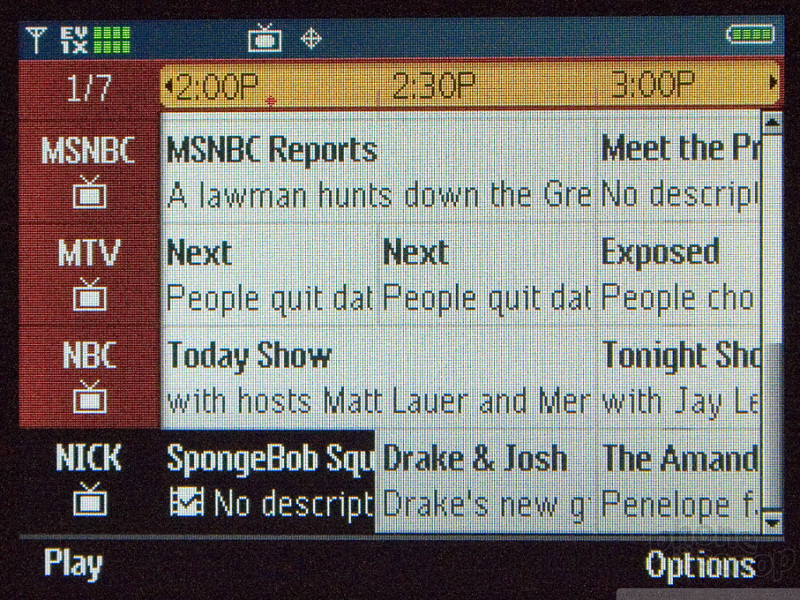










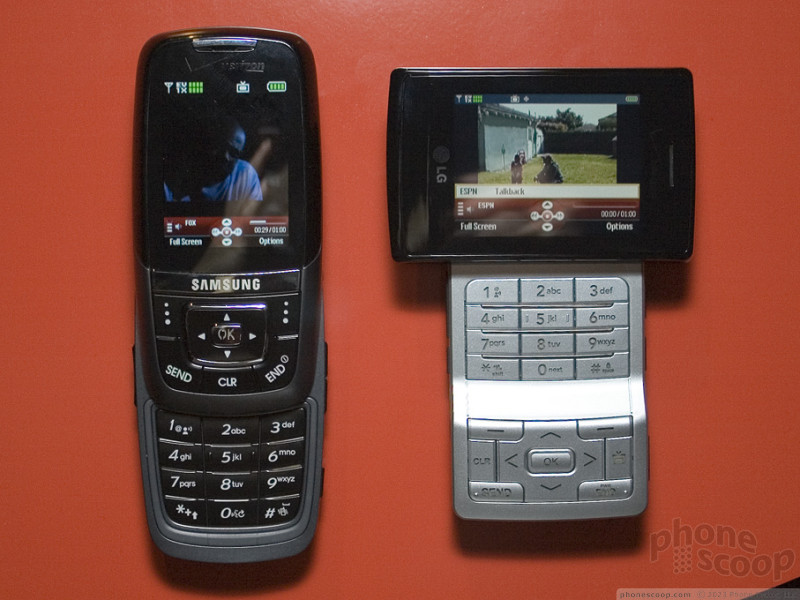



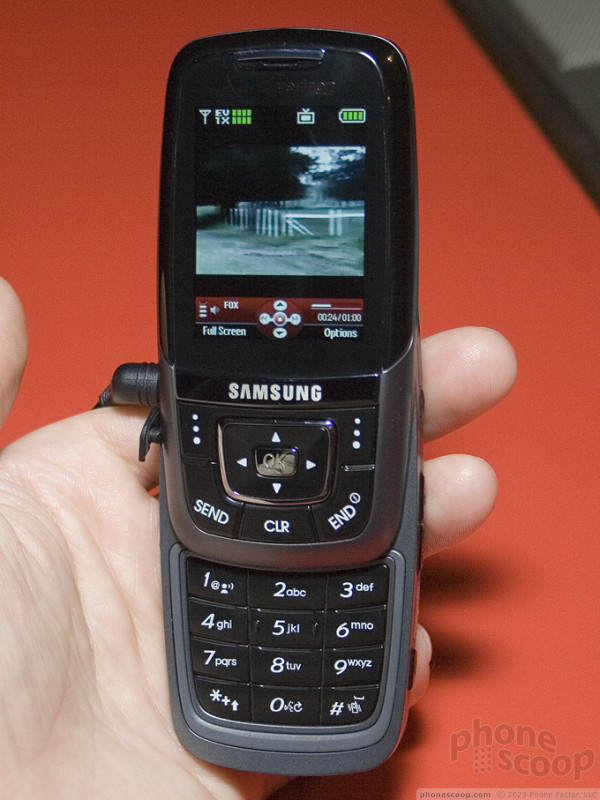








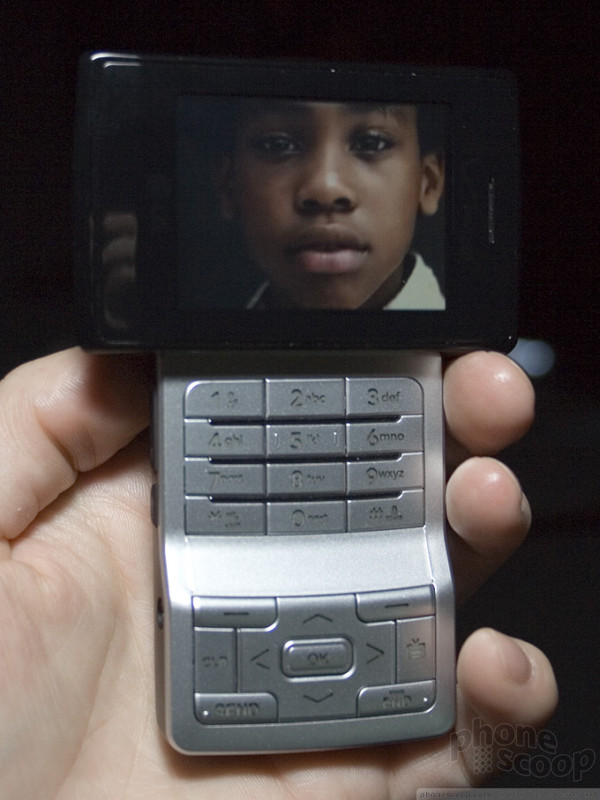









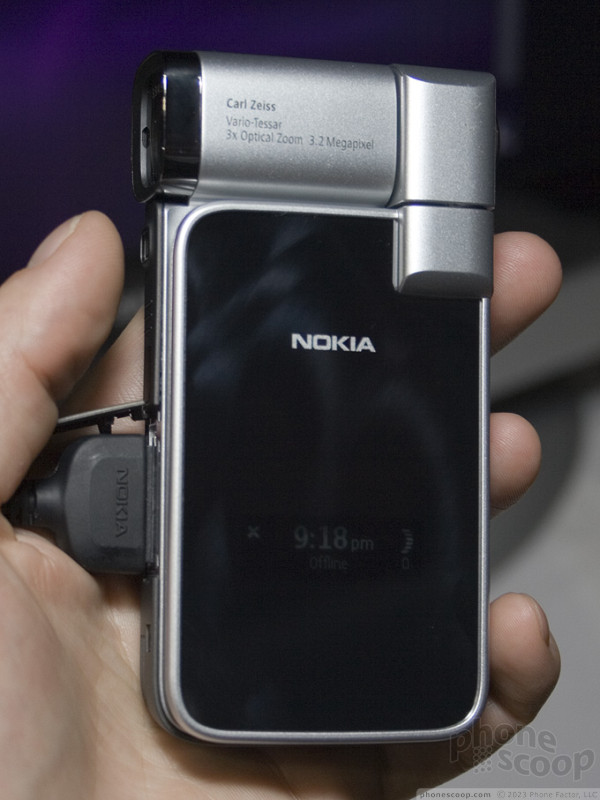





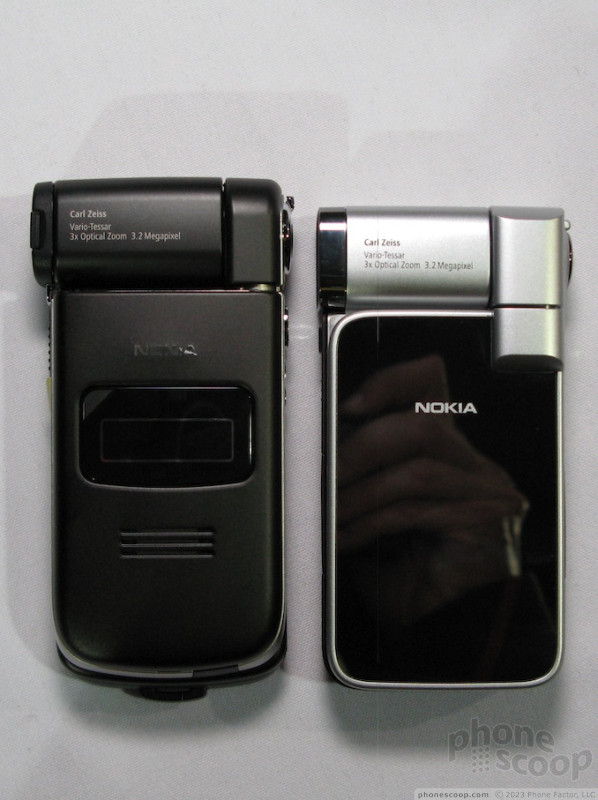




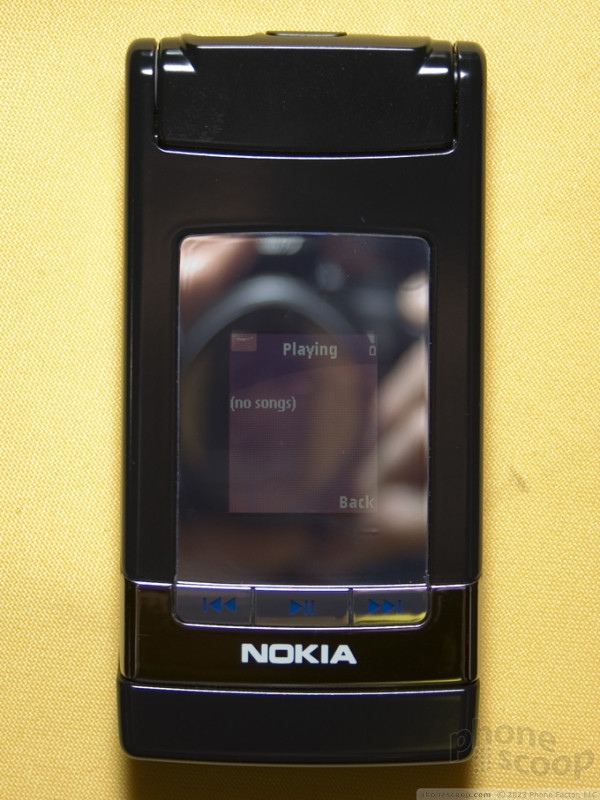





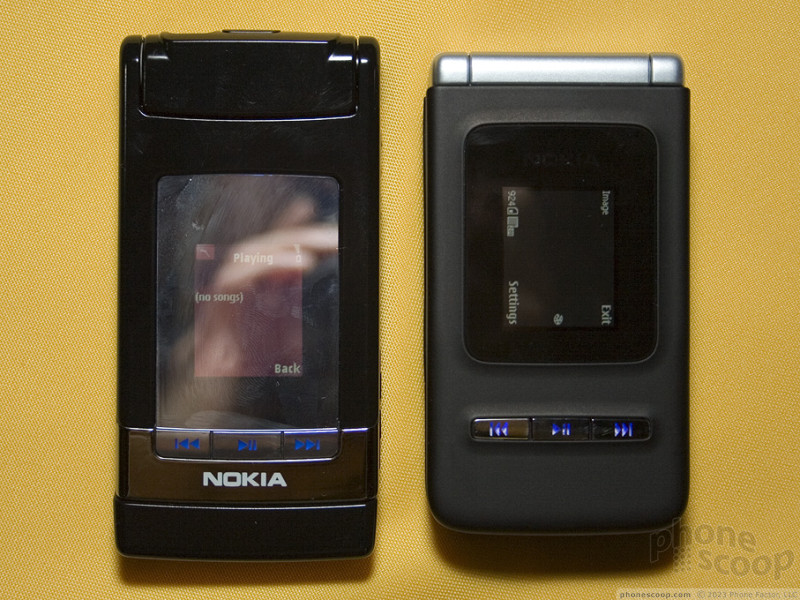



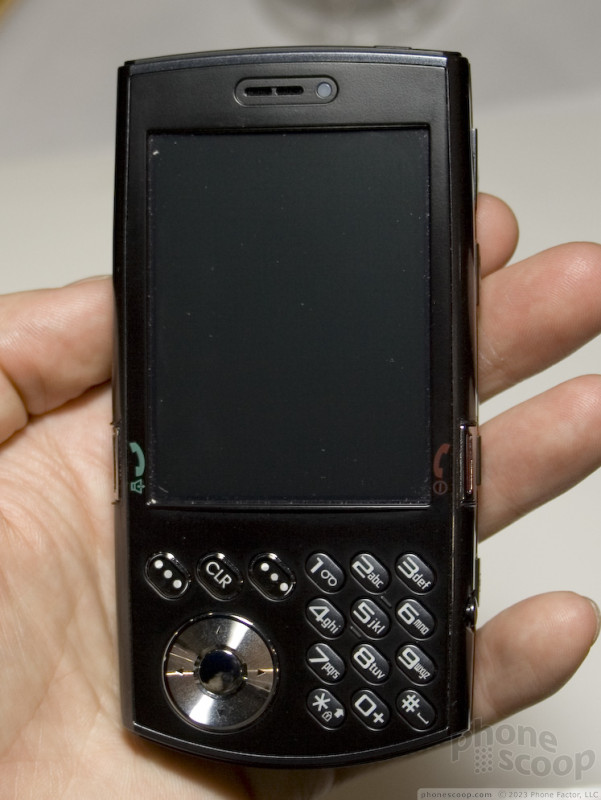











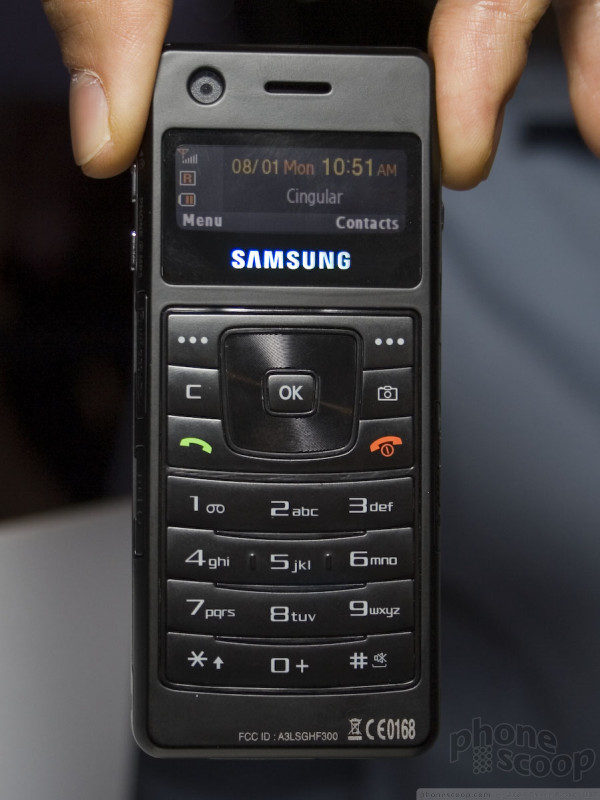




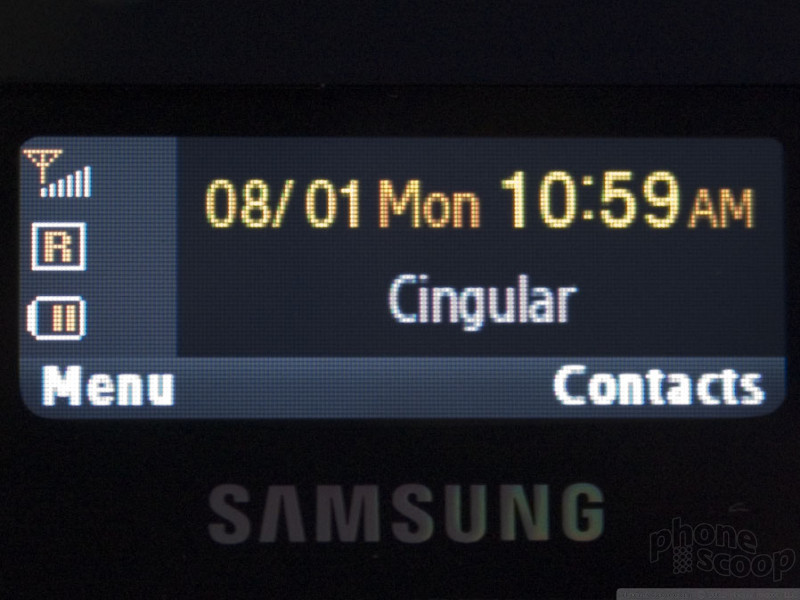









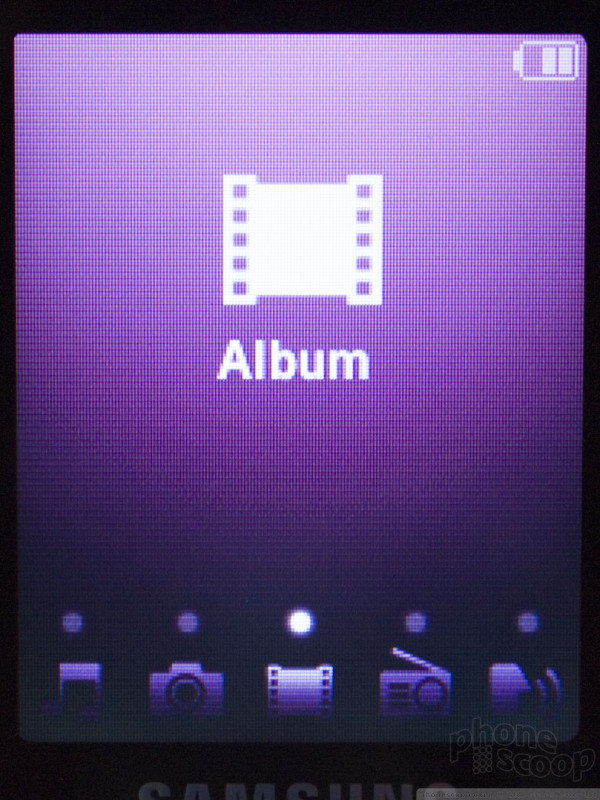



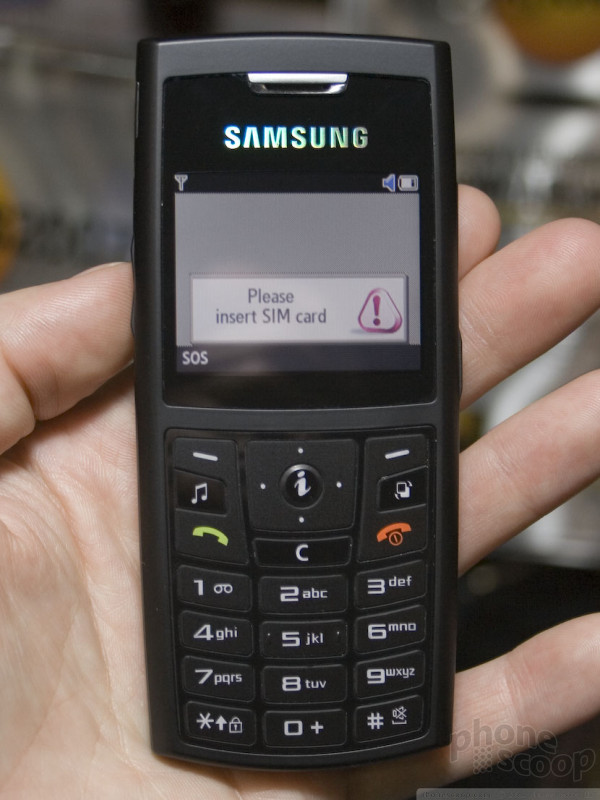







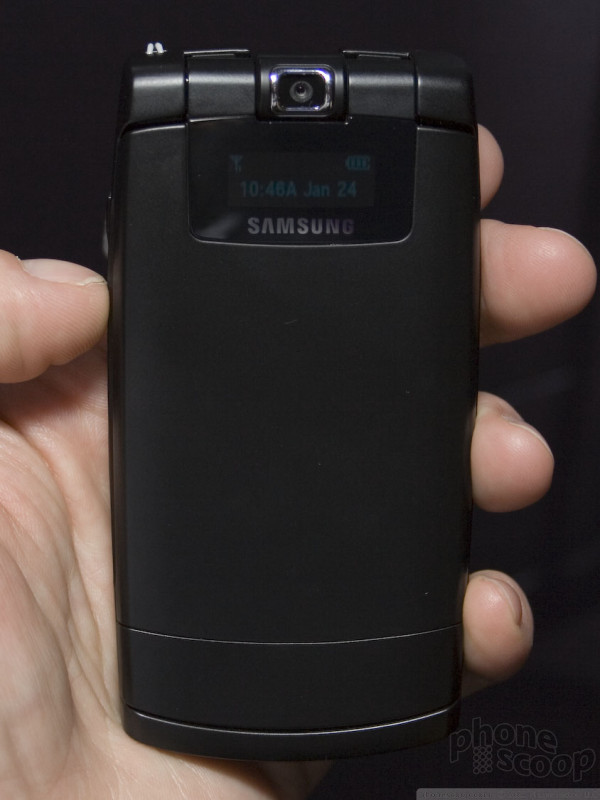





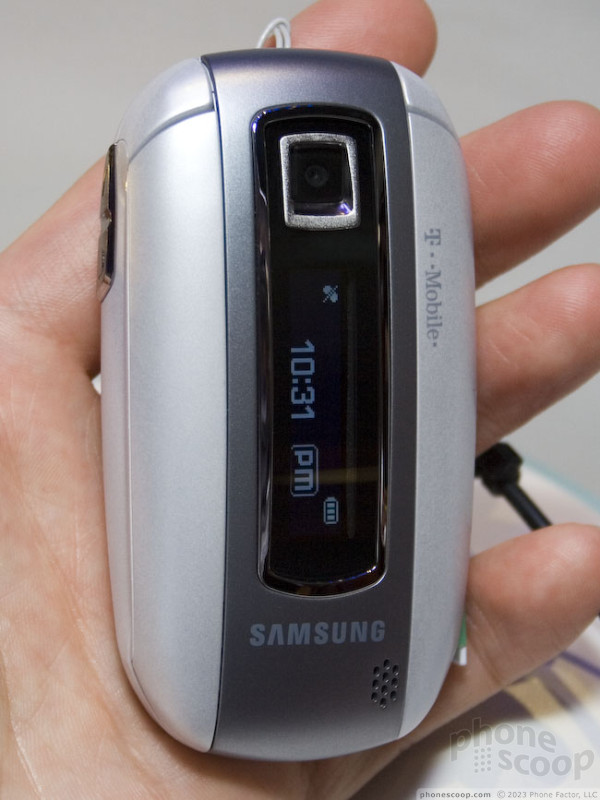



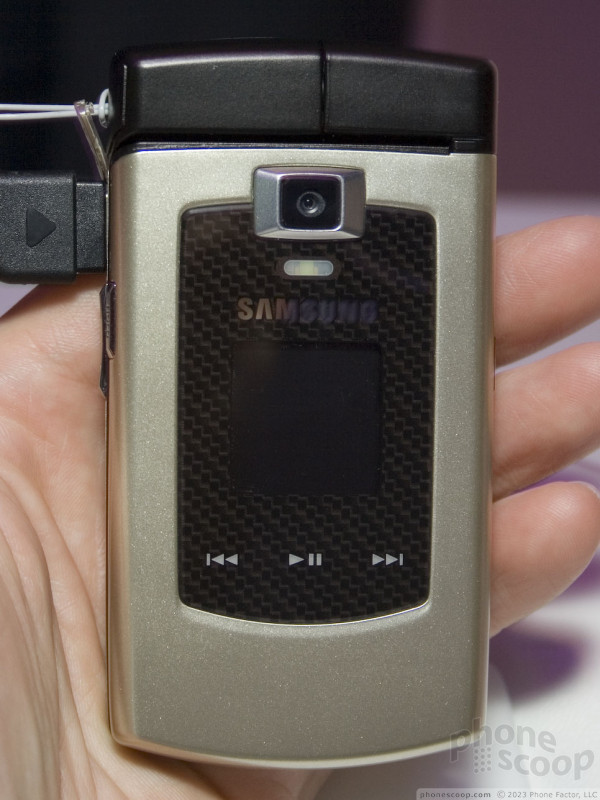




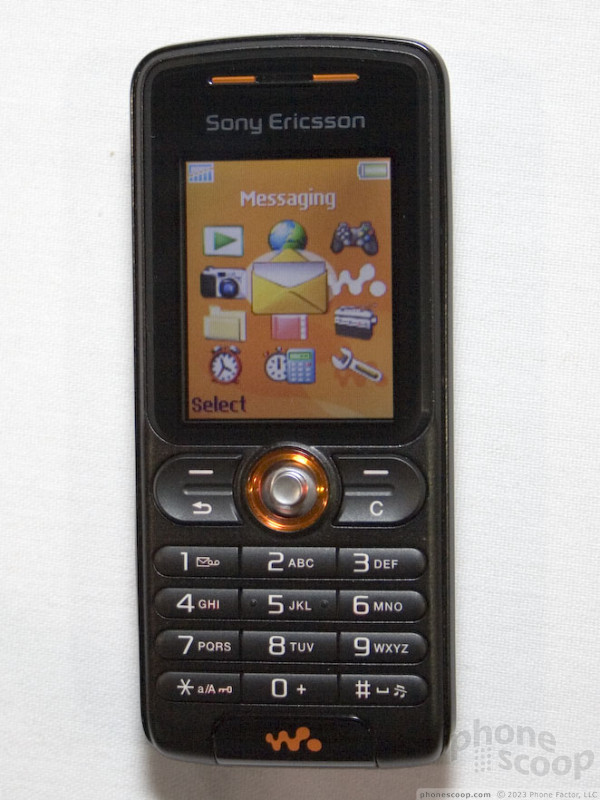





















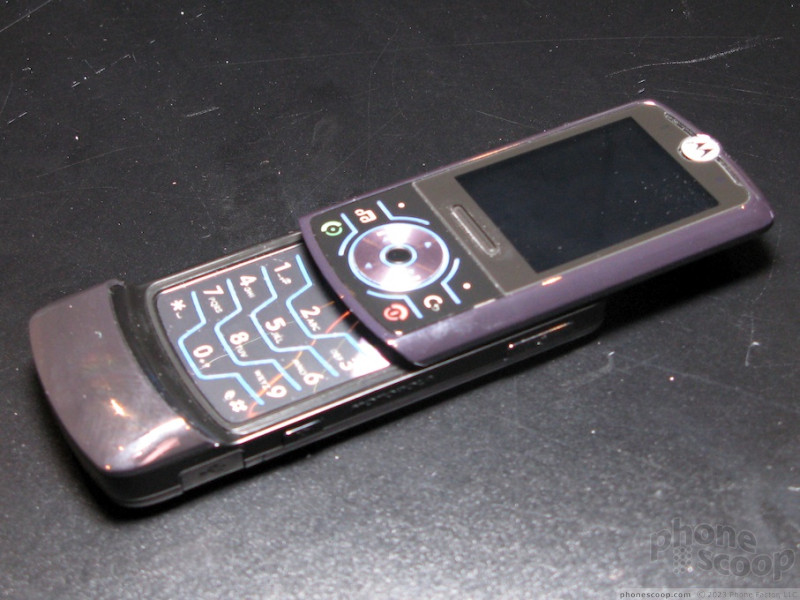







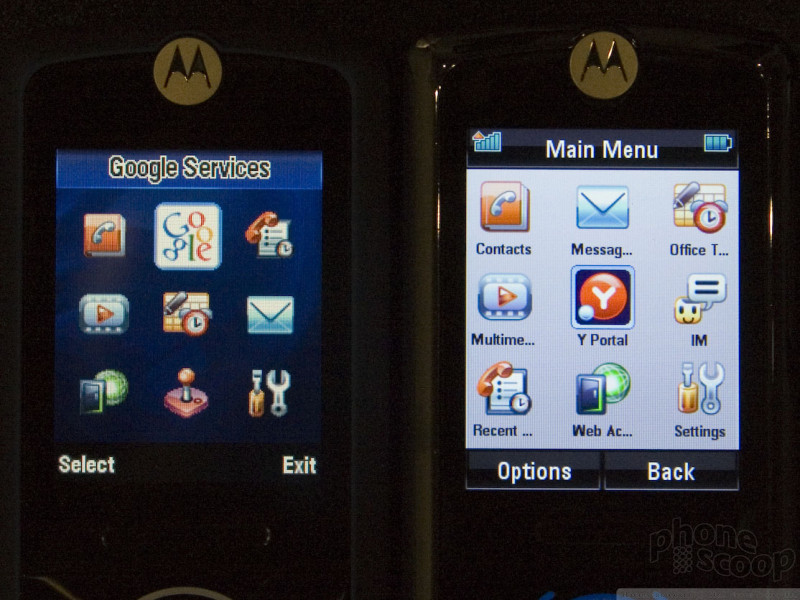



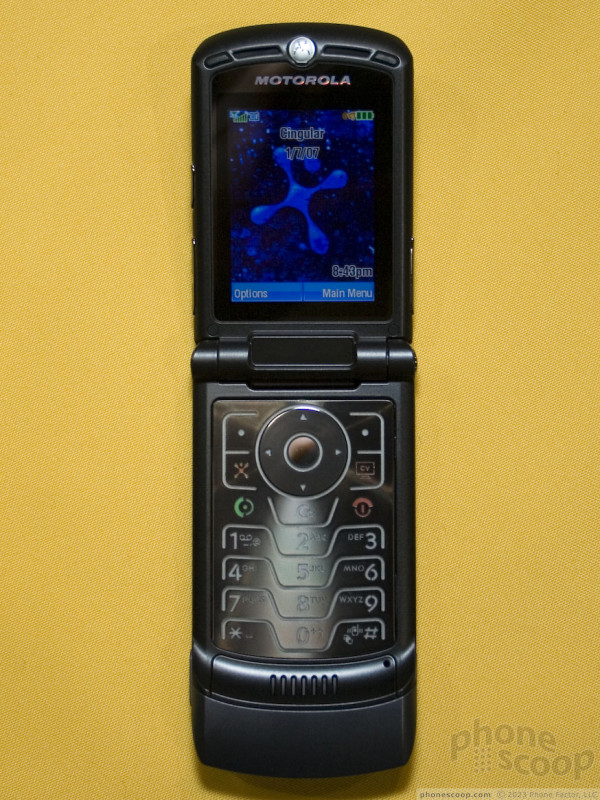





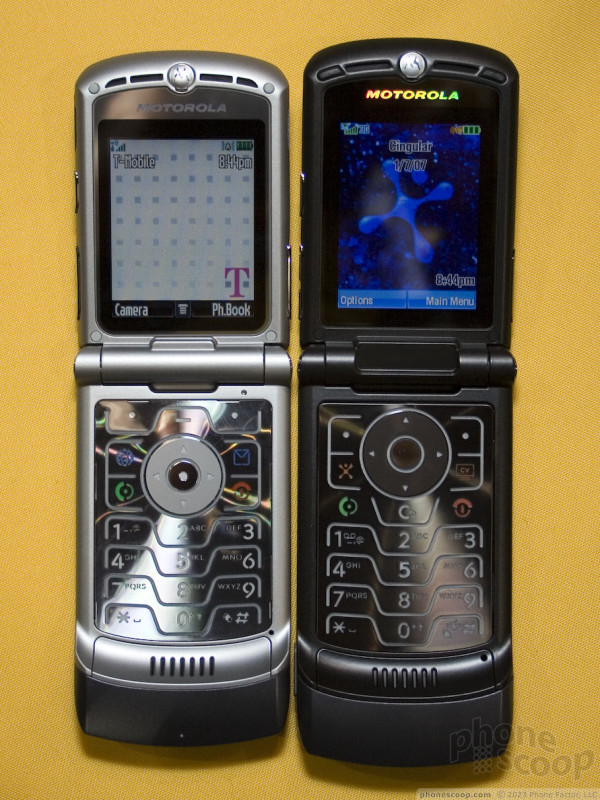



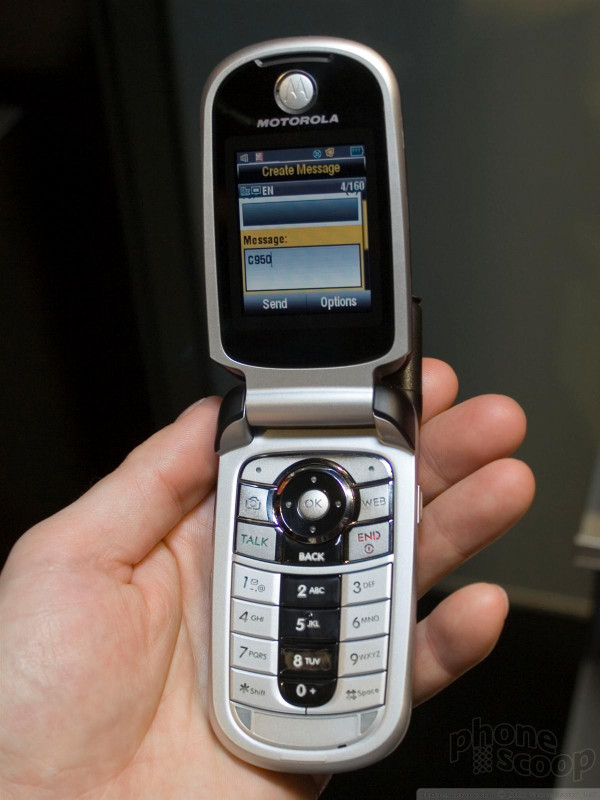









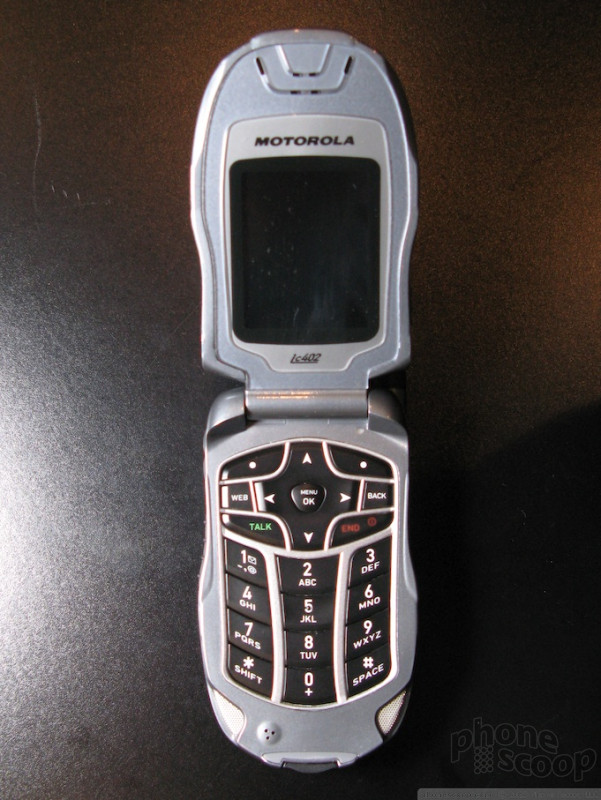


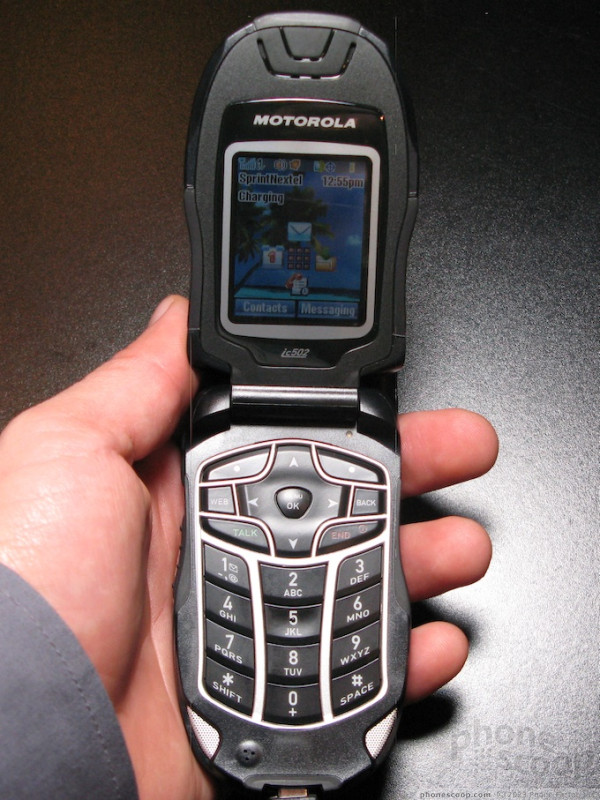


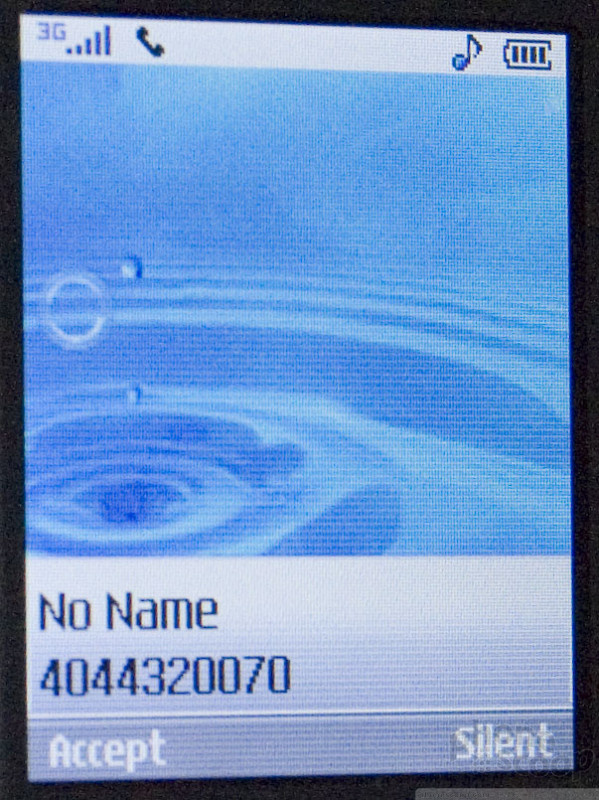

























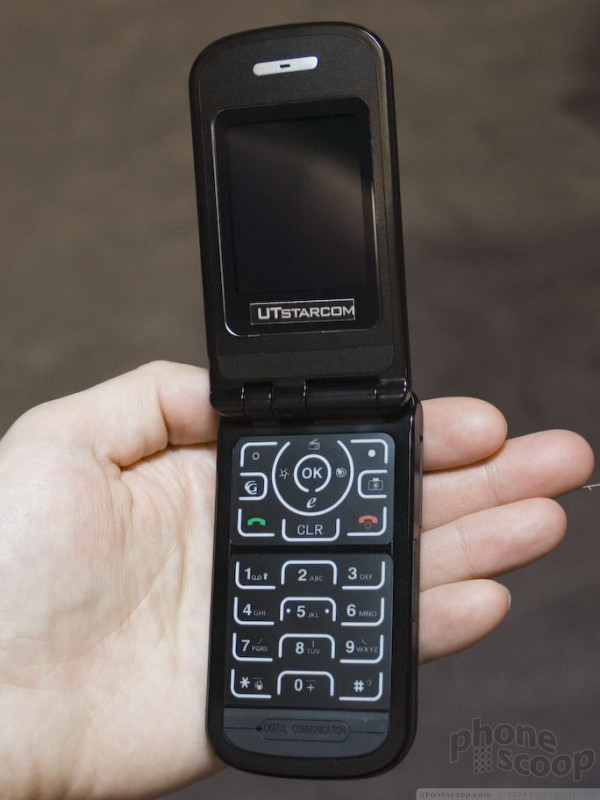




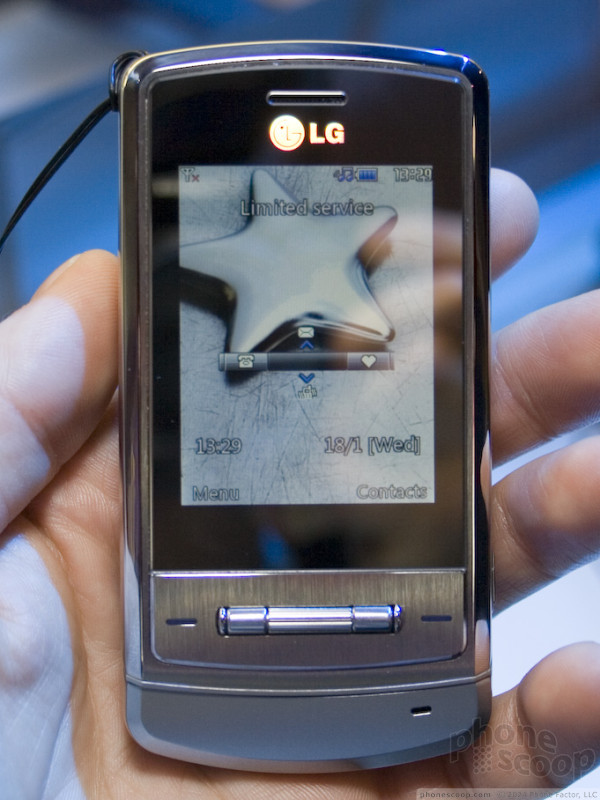







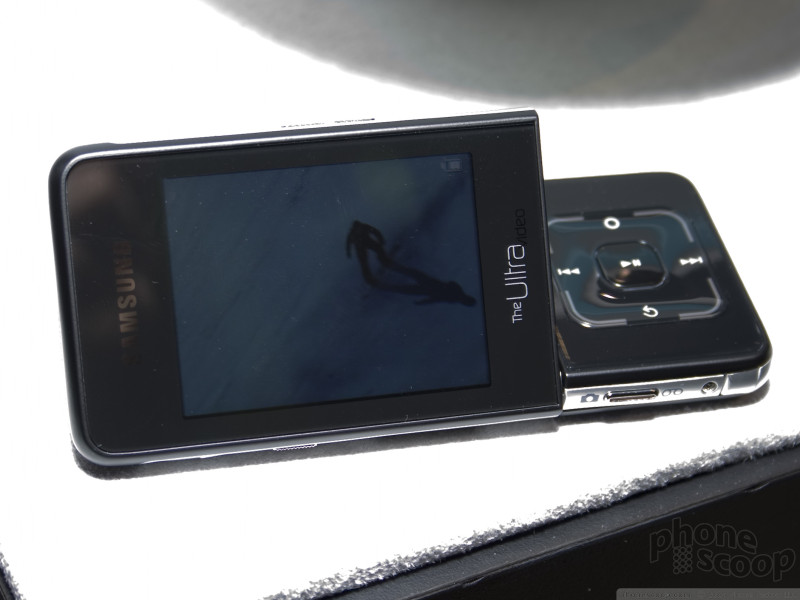






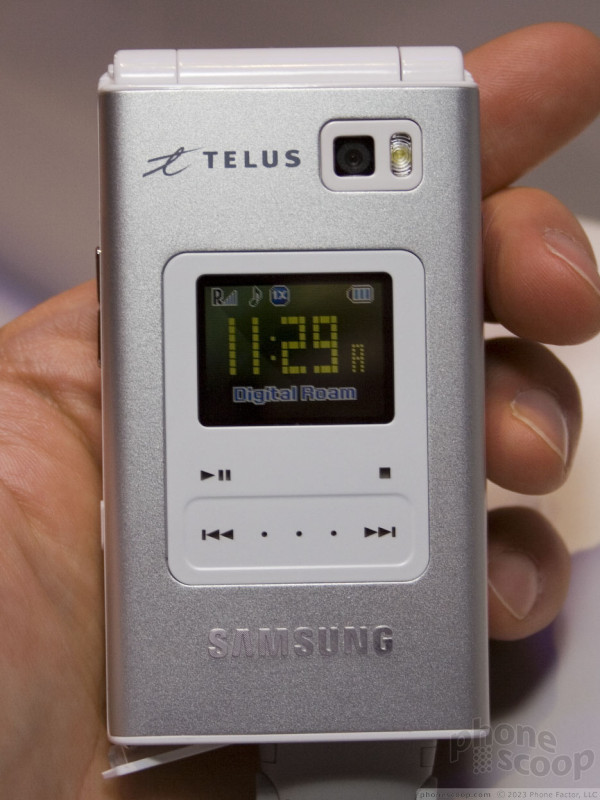
















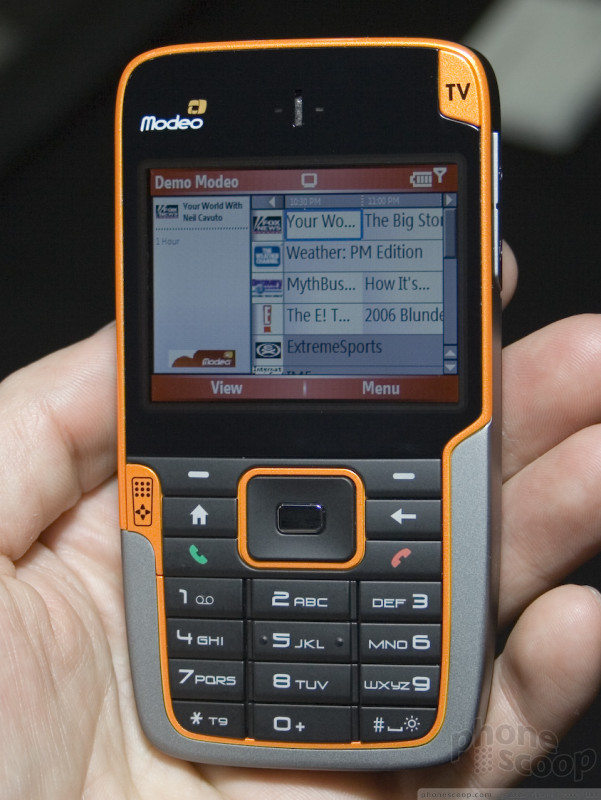




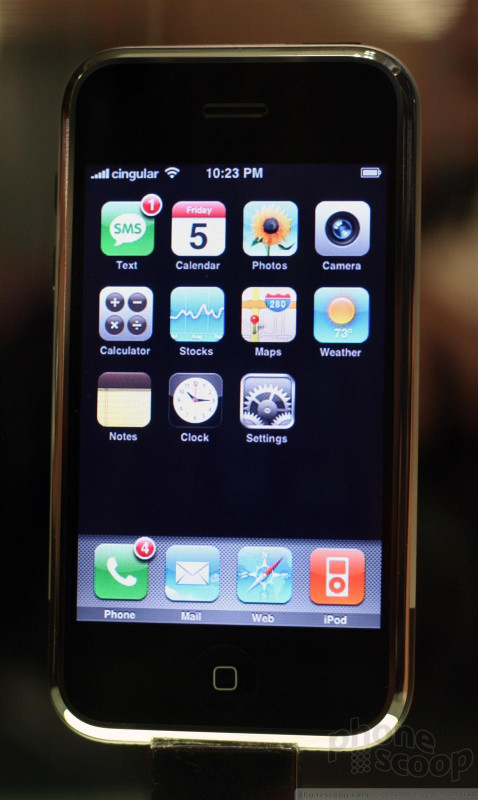







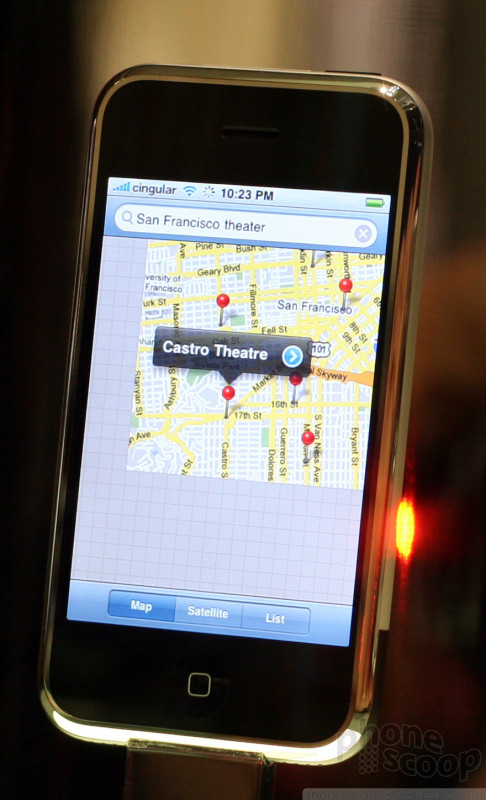








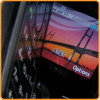 Video Tour: Samsung A717 & A727
Video Tour: Samsung A717 & A727
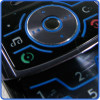 Review: MOTOROKR Z6
Review: MOTOROKR Z6
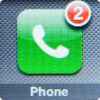 Review: iPhone
Review: iPhone
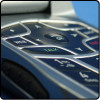 Review: Motorola ic402
Review: Motorola ic402
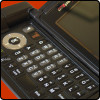 Samsung U740 Video Tour
Samsung U740 Video Tour
 Motorola ic502 Buzz
Motorola ic502 Buzz

